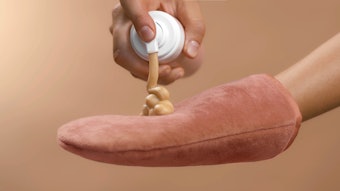
Only on SkinInc.com: Following are five informational facts about sun damage, including what it causes and how it can be avoided, from Glenn Kolansky, MD, board-certified dermatologist in Red Bank, NJ, in honor of next month being Melanoma Awareness Month. Educate your clients with these facts and consider creating a flyer or brochure to send home after treatments and retail purchases encouraging them to perform skin self-exams and safe sun behaviors. Melanoma is deadly and common, and often can be avoided. Take the opportunity this May ... and all year long ... to make a lifesaving difference in your clients' lives.
1. Although there is a lot of information about the dangers of indoor tanning booths, many people still use them. There are many young people who suffer from melanoma, and many of them are women. Presently, 36 states have legislation in place that prevents minors from using tanning booths because of their dangers. Childhood sunburns and exposure to UV radiation is a risk factor for melanoma.
2. UV causes photoaging. UV radiation causes the collagen to break down at an increased rate than with chronological aging. This radiation damages collagen fibers and causes the accumulation of abnormal elastin. When this elastin accumulates, enzymes known as metalloproteinases (MMPs) are produced. Usually, this causes the remodeling of sun-damaged skin; however, this process does not always work well and instead breaks down collagen, causing wrinkles. UV radiation can also impair enzymes that repair DNA. Photodamage can cause wrinkles, pigmentary skin changes, laxity, broken blood vessels and a rough skin appearance.
3. Spray tans provide a tanned appearance to the skin without sun exposure. A common ingredient is dihydroxyacetone (DHA). This darkens the skin by reacting with amino acids on the skin's surface. DHA spray-tanning booths are not approved by the U.S. Food and Drug Administration (FDA). These products may be applied to the skin except in areas of the eyes or mucous membranes, such as the lips. Adverse events associated with sunless tanning usually occur in tanning booths and include dizziness, coughing or fainting. Some of these reactions may be allergic in nature--potentially to the preservatives, perfumes or other additives in the solution--and not necessarily because of DHA. Additional research on the effects of DHA is necessary.
4. Generally, an SPF of 30, applied 20–30 minutes before sun exposure and reapplied every two hours has been shown to be effective. Clients with lighter skin types that burn easily should be more cautious in the sun. Some studies have shown that an application of a SPF of 70 provides better protection than a lower SPF. Usually sunscreens are not applied in a layer to cover the skin thoroughly enough or often enough to provide optimum protection. The FDA has new regulations on sunscreens that become effective in June of 2012. This requires the label to indicated which classes of protection the sunscreen provides: UVA or UVB or both. Packaging also will no longer be able to use the term "waterproof," instead, "water-resistant" for 40 or 80 minutes.
5. Many people have moles or nevi. They often increase in number after puberty. Normal moles are usually even in color with distinct borders. They may be round or oval and smaller than a pencil eraser head (6 mm). Sun exposure as a child is a factor that increases the number of nevi, and multiple sunburns are a risk factor for melanoma. Recommend that your clients get to know their bodies and the type of moles they have since the change of a mole in size, shape or color requires professional evaluation by a dermatologist. The ABCDEs of melanoma, developed by the American Academy of Dermatology, is a guide to look for irregular moles. Provide these guidelines to all clients after a treatment, as well as on your website.
- A is for asymmetrical shape. If you were to cut the mole in half, are the two sides different-looking?
- B is for irregular border. Notched or scalloped borders can be signs of melanoma.
- C is for changes in color. Does the mole have many colors in an uneven distribution?
- D is for diameter. Look for new growth in a mole larger than 6 mm.
- E is for evolving. Look for changes over time, such as moles that change in color or shape.
Other suspicious changes in a mole include scaliness, itching, bleeding or the spread of pigment from the mole into the surrounding skin. Usually seen in natural redheaded individuals but not limited to them alone is amelanotic melanoma. This is melanoma without pigment. Often appearing as cotton candy pink or looking like the appearance of apple jelly, these can be as life-threatening as there pigmented cousins. It is recommended that clients examine their own skin on a monthly basis and have professional examinations. Monthly self-exams make it easier to recognize change. The early detection of melanoma can be lifesaving for your clients.










